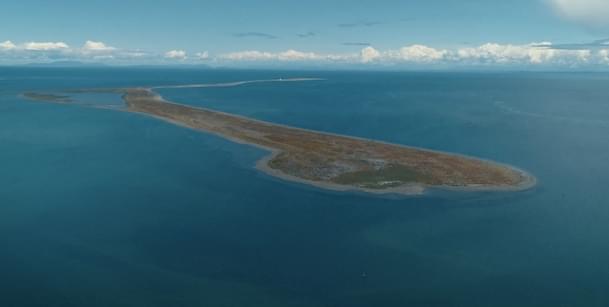Top 5 Kayaking Tips
In this video, we're going to look at five kayaking tips that will make you a better paddler or at least save you the hassle of learning important lessons the hard way.
Purpose of a Rudder
First off, you might it hard to believe but the main purpose of a rudder isn't to help turn your kayak. A rudder's primary role is actually to keep your kayak going straight. In particular, a rudder keeps your kayak traveling straight when you're paddling in windy conditions because your boat naturally wants to turn in to the wind, something that's called weather cocking.
The rudder is used to counteract your kayak's desire to weather cock. If you don't have a rudder, you can find yourself struggling to keep your kayak moving straight, especially if the wind is coming directly from the side. And so if you're gonna be paddling in big exposed bodies of water that is subject to a lot of wind, you're probably going to want a kayak with a rudder.
Know Limitations
The second key tip is to have a clear understanding of the limitations of where you can take your kayak. As a general rule, if you venture in to water that isn't protected from wind and waves, and/or if you travel further from shore than you can comfortably swim, you're entering a new world, a world in which you'll need to protect yourself and the people you're paddling with by taking a sea kayaking course and developing among other things valuable rescue skills.
One good thing you can do to better understand your limitations is to practice re-entering your kayak from the water before you ever need to do it for real. One thing that I can tell you is that re-entering a sit-on-top kayak is a lot easier than re-entering a sit-inside kayak because it won't swamp. In fact, just emptying the water out of a sit-inside kayak is a major ordeal on the water, especially if your kayak doesn't have a bulkhead. Now, a bulkhead is a wall in the kayak that separates your kayak into unique compartments so in the event of a capsize, the whole boat won't swamp.
Whatever type of kayak that you're using, if you can't confidently re-enter your kayak from the water, then it only makes sense that you stay close enough to shore that you can comfortably swim if for some reason you end up flipping.
TAHE 10'6 & 11'6 SUP-YAK Inflatables
2-in-1 Kayak & Paddle Board complete packages for single or tandem use.
Transporting Kayaks
The third big kayaking tip is to invest in a decent set of roof racks for your vehicle so you avoid the nightmare scenario of having your boat or your whole rack system fly off your vehicle while you're driving down the road. When I talk about a good set of roof racks, I'm generally not talking about factory installed racks that come with many vehicles. The best setups come from specially manufacturers who have racks to fit virtually any vehicle, and they have unique systems that make loading and unloading and tying down the boat a lot easier and safer.
Power from Torso Rotation
The fourth kayaking tip is to use the power of torso rotation for all your strokes, which means engaging your whole upper body for your strokes and not just using the muscles in your arms. To do this, you need to twist at the waist when you take a stroke rather than just pulling with your arms. For example, when taking a forward stroke, the reach forward shouldn't just involve your arms. It should involve your whole upper body. What this means is that if I'm taking a stroke on the right side of my boat, I'm gonna reach forward with not only my hand, but with my right shoulder, turning my body to the left, and then plant the blade fully in the water, and when I pull on that stroke, I'm pulling with my arms and my full upper body.
Safety First
The last of the top five kayaking tips is to always keep safety in mind. Overall, kayaking is a remarkably safe activity but, it's important to understand the fact you are on the water means that when situations do come up, things can get very serious very quickly. This is why you need to assume a conservative and safety conscious attitude when making decisions on the water and follow with you simple safety rules:
- Don't drink alcohol in a kayak. The two just don't go together.
- Always wear a life jacket on the water. And there are many great
- Dress for the conditions and understand that when you're paddling in cooler water, you need to be even more conservative with all your decisions.
Related Articles
By changing how you edge and balance your boat you can increase your stability and adaptability. Using…
Spring is here and the air is warm. But just because the day is beautiful doesn't mean the water…
Dungeness Spit from above, with the New Dungeness Lighthouse in the distance Dungeness…
Whether you were new to paddling in 2018 or you're an experienced paddler, you can never stop learning.…




